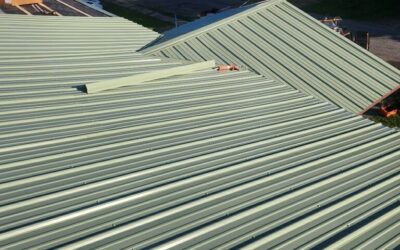🏠 Hip Roof with Dormers: Ultimate Guide for Style, Function & Value
Adding dormers to a hip roof brings both charm and practicality. Dormers introduce natural light and headroom, transforming attic spaces into cozy living areas while enhancing curb appeal. This detailed guide explores hip roofs with dormers, providing design inspiration, structural guidance, construction tips, and practical advice for homeowners, builders, or real estate professionals. Full roof installation services
Table of Contents
- What Is a Hip Roof with Dormers?
- Benefits of Adding Dormers to Hip Roofs
- Common Dormer Types for Hip Roofs
- Planning and Design Considerations
- Structural & Framing Essentials
- Roof and Flashing Integration
- Siding, Windows & Trim Work
- Insulation, Ventilation & Weatherproofing
- Architectural Style & Curb Appeal
- Construction Timeline and Cost Estimates
- Working with Contractors and Designers
- Challenges and Solutions
- Maintenance and Longevity
- Sustainability and Energy Efficiency
- Frequently Asked Questions (FAQs)
- Final Thoughts
1. What Is a Hip Roof with Dormers?
A hip roof has four sloping sides converging at the top. Dormers are small roofed projections with windows, protruding from the main roofline. They add light, space, and character.
When you combine dormers with a hip roof, you get a dynamic, multi-level roofline that offers both practical space and architectural depth. Common dormer variants for hip roofs include gable dormers, hip dormers, shed dormers, and eyebrow dormers.
2. Benefits of Adding Dormers to Hip Roofs
2.1 Enhanced Usable Space
Dormers increase square footage and headroom in the attic, making usable rooms of previously cramped spaces.
2.2 Improved Natural Light
Dormer windows bring daylight into interior spaces, reducing the need for artificial light and creating a pleasant atmosphere.
2.3 Architectural Interest
Break up large hip roof surfaces with visually appealing dormers — this adds dimension and balance to the façade.
2.4 Boosted Home Value
Homes with attractive dormers often command higher prices thanks to increased space and curb appeal.
2.5 Potential for Additional Rooms
Attics with dormers can accommodate bedrooms, offices, bathrooms, or playrooms.
3. Common Dormer Types for Hip Roofs
3.1 Gable Dormer
Triangular gable roof sitting on top of a dormer face; classic look, pushes window forward.
3.2 Hip Dormer
Miniature hip roof dormer matching main roof style — more integrated but costlier.
3.3 Shed Dormer
Single sloped roof perpendicular to the main slope — ideal for maximum headroom.
3.4 Eyebrow Dormer
Low, arched roof without side walls — elegant, subtle curve that fits smoothly.
3.5 Integrated Dormer
Dormers nestled within the existing hip slope — requires precise flash and framing.
4. Planning and Design Considerations
4.1 Dormer Placement
Choose dormer locations for structural support and aesthetic balance; typically near roof ridge axes.
4.2 Size Proportion
Dormers should be proportional; a general rule: dormer width ≈ 40–50% of roof section width.
4.3 Window Selection
Use double-hung, casement, or hopper windows; match frame style and muntin patterns.
4.4 Roof Pitch Matching
Align dormer pitch with hip roof—or use slight variations for visual contrast.
4.5 Exterior Finish
Blend materials — vinyl siding, wood, stone, or stucco — into your home’s existing palette.
5. Structural & Framing Essentials
5.1 Cutting into Roof Sheathing
Carefully cut and open sheathing from below; maintain protection against weather.
5.2 Framing Dormer Walls & Roof
Build wall framing, header beams for window openings, and roof rafters tailored to dormer type.
5.3 Support and Load Transfer
Ensure dormers are supported with headers, jack rafters, and sister rafters tying into hip roof framing.
5.4 Flashing and Roof Transitions
Use step flashing, valley flashing, and ice-and-water barriers at dormer-to-roof intersections.
5.5 Integration w/ Attic Structure
Tie dormer framing to interior ceiling joists and roof structure; collar ties may be needed.
6. Roof and Flashing Integration
6.1 Flashing Techniques
Implement step flashing along side walls; use counter-flashing at roof joins to prevent leaks.
6.2 Valley Flashing
When dormers intersect main roof valleys, use T-shaped or saddle flash to guide water.
6.3 Roofing Material Consistency
Match dormer roofing to main roof — asphalt, metal, or shingles — for visual cohesion.
6.4 Weatherproofing Details
Ensure underlayment extends properly under roofing, along dormer perimeter, and at rakes.
7. Siding, Windows & Trim Work
7.1 Sheathing & Housewrap
Use moisture-resistant plywood or OSB; adhere breathable housewrap for barrier protection.
7.2 Siding Choices
Use siding that matches the main façade; stagger seams to avoid alignment with flashing slits.
7.3 Window Installation
Install windows plumb and square; use flashing tape or rough window flashing to seal edges.
7.4 Trim Styling
Accent dormers with corner boards, crown molding, and consistent paint colors to tie it all together.
8. Insulation, Ventilation & Weatherproofing
8.1 Ceiling and Wall Insulation
Use spray foam for tight air barrier; supplemental batts for cost change.
8.2 Ventilation Paths
Keep soffit intake and ridge exhaust clear; dormers should not block airflow.
8.3 Vapor Barrier Use
In cold climates, install effective vapor retarder or sealed foam to prevent condensation.
8.4 Moisture Protection
Use drip edge, overhangs, and sealants at dormer junctions to shed water better.
9. Architectural Style & Curb Appeal
Combine hip roof and dormers to uplift home aesthetics:
- Traditional: Classic gable dormers with shutters
- Craftsman: Overhanging eaves and bracketed dormers
- Modern: Shed or eybrow dormers with minimal lines
- Historical: Symmetrical dormers reflecting colonial design
- Eclectic: Multiple dormer types for a personalized style
10. Construction Timeline and Cost Estimates
Timeline Stages
- Permits and design (2–4 weeks)
- Roof cutting and framing (1–2 weeks)
- Sheathing, roofing, flashing (1 week)
- Siding, trim, window installation (1–2 weeks)
- Insulation and interior finishes (1 week)
Cost Ranges (U.S. averages)
- Small gable dormer: $5–10K
- Hip dormer: $8–15K
- Shed dormer: $10–20K
- Multiple dormers: $20–40K+
Factors include dormer size, framing needs, materials, and labor rates.
11. Working with Contractors and Designers
Choosing Professionals
- Look for experience with hip roofs and dormers
- References and portfolio matter
- Clarify pricing (fixed vs hourly) and materials used
Design Collaboration
- Include layers: structural, architectural, and interior design
- Ensure permit compliance and inspections
- Include energy code compliance (insulation/R-values, air sealing)
12. Challenges and Solutions
Water Intrusion
Solution: Proper flashing, drip edges, and slope.
Structural Weak Drilling/Walls
Solution: Add headers and sister rafters; structural drawings essential.
Ventilation Interruption
Solution: Re-balance soffit and ridge vents; consider powered fans.
Exterior Match
Solution: Stock or custom siding; blend trim and paint color.
13. Maintenance and Longevity
Regular Checkpoints
- Clean gutters and dormer roof decks
- Inspect flashings and seal joints
- Monitor window seal integrity
- Address rot or insect damage early
14. Sustainability & Energy Efficiency
- Add insulated (low-E) windows to improve U-factor
- Use reflective or cool roofing materials to cut heat gain
- Incorporate solar attic fans or PV-ready sheathing
- Maintain air tightness through spray foam or taped sheathing
15. Frequently Asked Questions (FAQs)
Q: Do dormers weaken roof structure?
A: Properly engineered dormers strengthen usable space—though framing is more complex.
Q: How many dormers can I add?
A: Depends on attic structure and ridge span—consult builder/engineer for structural limits.
Q: Are dormers energy-efficient?
A: Yes, when well-insulated and sealed—but glazed areas may lose heat if not quality windows.
Q: Which dormer type is cheapest?
A: Gable dormers tend to be most cost-effective; hip dormers are pricier.
Q: Do dormers require permits?
A: Usually yes—check your local code, especially with new windows involved.
16. Final Thoughts
A hip roof with dormers offers a powerful blend of functional space, visual appeal, and lasting value. Though it involves intricate planning and additional construction costs, the outcome—a bright, spacious attic and elevated curb appeal—often justifies the investment.
Whether you’re remodeling or building new, dormers on a hip roof deliver unforgettable character, usable space, and architectural flair. If you’d like help turning this into branded HTML content, targeted local SEO, or design checklists, just say the word!
 (440) 307-2060
(440) 307-2060

